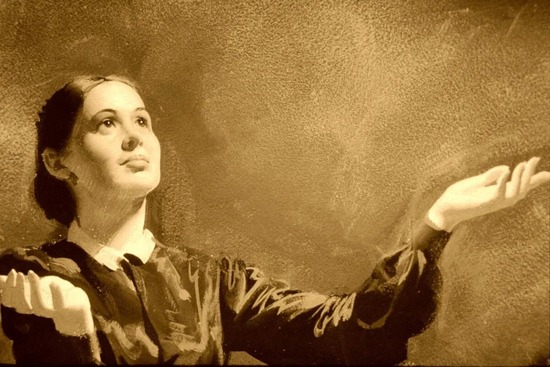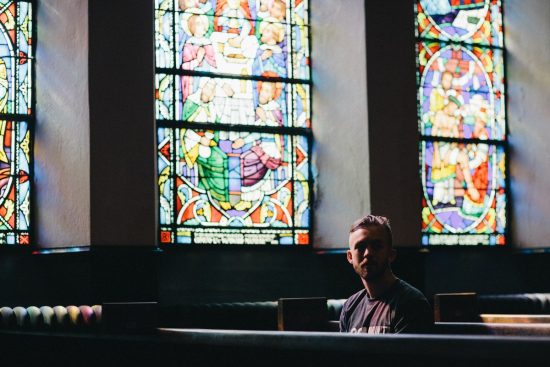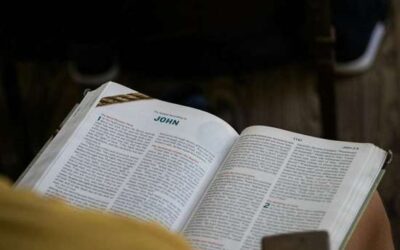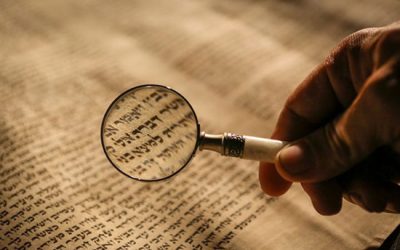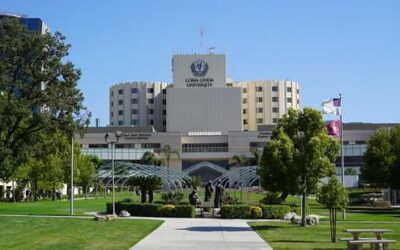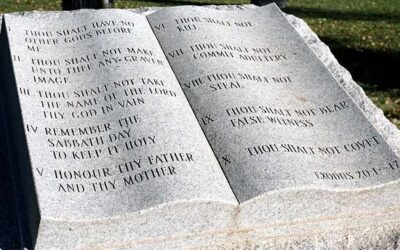Ellen White traveled to Australia in the later part of her life, and she ended up spending nine years there. In that time, she helped the Australian Seventh-day Adventist Church increase in size and strength.
Much of her time there involved speaking at churches and camp meetings. She also was instrumental in establishing various Adventist institutions, such as health centers, a health-food factory, and an Adventist college.
But what was it that really made this trip so significant in her ministry? Let’s look more closely at:
- Why Ellen White went to Australia
- When she made the trip
- Places she went and things she accomplished
- The impact she had in Australia
Let’s learn a little more about how Ellen White’s efforts affected the “land down under” for the Adventist Church.
Why did Ellen White go to Australia?
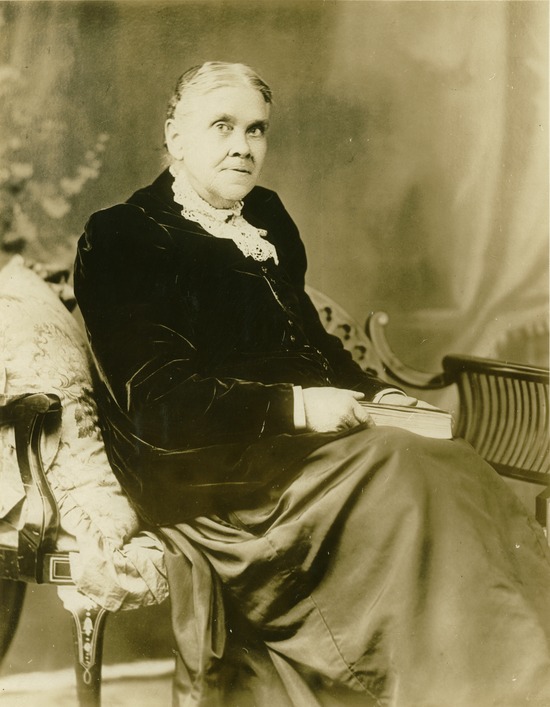
“Courtesy of the Ellen G. White Estate, Inc.”
Ellen White went to Australia at the request of the Foreign Mission Board of the Seventh-day Adventist Church.
Here’s some of the story from her biography, as explained by her grandson, Arthur White.1
The idea to send Ellen White to Australia started at the 29th General Conference Session of 1891. An Adventist missionary named Stephen Haskell was among the first to suggest it. He thought Ellen White’s presence would encourage progress in the church there and wanted her help starting an Australian mission school.
Many conference members agreed with his idea. And eventually, the Foreign Mission Board asked Ellen White if she would be willing to go.
She had often been instructed by the Holy Spirit regarding where she was being called to serve. But this time, He seemed to remain silent on the matter.
Because He didn’t tell her to stay or go, she wondered if she was meant to go at all.
Personally, she hoped she wouldn’t have to go. She had grown weary of travel. She had already traveled through a considerable amount of the United States and also visited Europe as a missionary. Now she was older and struggling with multiple health challenges. She thought she could best serve the Lord by staying home and writing the instruction that could be beneficial to share with the church.
But in the end, she decided she would follow the General Conference’s counsel (as she had done when invited to go to Europe a few years before).
Yet, even as she traveled there, she still faced moments of doubt and depression, wondering whether God really wanted her there.
This just demonstrates that even those with the gift of prophecy sometimes struggle with discerning what God wants them to do. No human is immune to sin’s effects of fear and doubt.
But although God may have seemed silent, Ellen White relied on prayer and her God-given reason to make a decision, trusting Him with the outcome.
God later revealed to her that it had not been His plan for her to go to Australia, but rather the will of the church leaders to send her there. Some reports even suggest that certain church leaders wanted Ellen White to leave for a while because of personal disagreements they had with her.2
But even though church leaders weren’t acting in cooperation with God’s will by asking her to go to Australia, His providence worked through her to accomplish wonderful things. So much so, that she decided to stay in Australia many more years than the two she had been asked to serve. God helped her to meet the great need for mission work and Bible teaching in the area.
Additionally, other things started falling into place. In a vision she was given back in 1875, she saw a printing press that she later ended up seeing in person in Australia.3
And in another vision the previous year, an angel told her the gospel message should be spread to all lands (including Australia):
“You are entertaining too limited ideas of the work for this time…You must take broader views…The message will go in power to all parts of the world, to Oregon, to Europe, to Australia, to the islands of the sea.”4
These two visions may have predicted Ellen White’s unintended but eventual influence in Australia.
Ellen White’s experience regarding her decision to go to Australia was one of the many, many times God demonstrates that even when things don’t pan out like they should, He can still do extraordinary things through those who are willing to follow His leading.
When she made the trip
Ellen White traveled to Australia by boat in 1891, when she was 64 years old. She was joined by her son W.C. White—Willie for short—and her writing assistants (as well as some Adventists who were interested in witnessing to the Australian people).
The trip was 26 days long because of stops in different countries. After leaving San Francisco, the ship stopped in Hawaii, Samoa, and then New Zealand. She arrived in Sydney, Australia, on December 8, 1891.5
And from that day until the day she left, she worked hard to build up the Australian Church.
But despite the success of her work, she also faced some challenges.
For one, shortly after she arrived, Australia descended into an economic depression.6 This made it hard for people to come up with enough money to build Adventist churches, schools, and hospitals. Beyond that, many Australian communities were in need of basic necessities. There were times when Ellen White and her family suffered financially as well.7
Even so, she was willing to forego new clothes and share what little food she had with others.8
Another hardship she faced was more illness. She caught rheumatic fever shortly after arriving in Australia.9
And on top of that, Willie’s wife had passed away only a year before they left for Australia.10
But even so, Ellen White and those with her were able to witness to countless people, establish several Adventist institutions, and spread the gospel through the Australian printing press. Willie even got remarried.11
By 1895, she and her family settled in a house at Cooranbong, New South Wales, which they came to call “Sunnyside.” In the beginning, Ellen White had intended to stay in Australia for only two years, but her trip ended up stretching to nine years.12
During that time, she ministered in several major Australian cities.
Places she went and things she accomplished
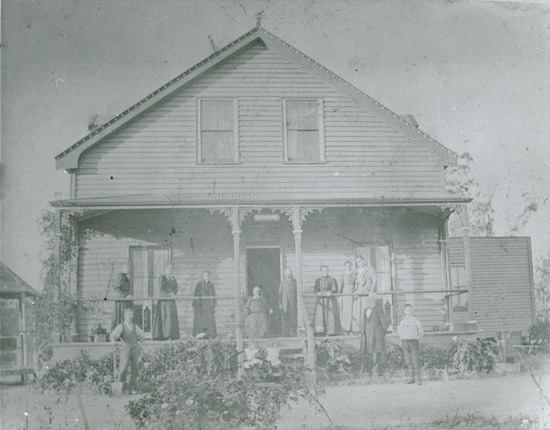
“Ellen White sitting on the front porch of her home in Cooranbong, Australia.”
Ellen White traveled to many different towns, cities, and states during her time in Australia. They are well-documented in Arthur L. White’s book, Ellen G. White: The Australian Years: 1891-1900.
A sample of her visits to the most prominent places are:
- Sydney: Soon after her arrival in Australia, she spoke to a group of people about the hope we have in righteousness by faith and was well-received.13 She ended up visiting here often.
- Melbourne: She came here to speak to the publishing house of the Australian Church—the Echo Publishing Company. This is where she recognized the printing presses from her visions. She also spoke at the fourth annual Australian Seventh-day Adventist Conference in Melbourne. In one session, she shared about the importance of creating Adventist schools.14
- Adelaide: She preached at the church here and frequently visited the area to speak with church members and minister to their needs.15
- Brighton: She spoke at a camp meeting where around a hundred people were baptized.16
- Williamstown: She also spoke at a camp meeting here.17 What she said about healthy living may have encouraged the development of an Adventist cooking school.
- Granville: She moved to this location in the northern part of New South Wales. She believed this new location in the countryside was better for her health.18
- Cooranbong: The church decided to plant the Australian school here.19 She approved of the location as God gave her a vision confirming the value of the land.20 And later on, she encouraged them to place a health-food factory and hospital here, too. In 1895, she moved here to a home called “Sunnyside.”
- Tasmania: This is where Ellen White went for her son’s wedding.21 She also attended a convention here.22
- Stanmore: She spoke at a camp meeting here.23
- Newcastle: Spoke at a camp meeting here as well.24
- Brisbane: At this particular camp meeting, she spoke about following God’s calling and living a temperate lifestyle.25
She even visited New Zealand for speaking engagements.26
And besides traveling to speak, she also helped establish key Adventist institutions—ones that still reveal the effects of her contributions.
What impact did Ellen White have in Australia?
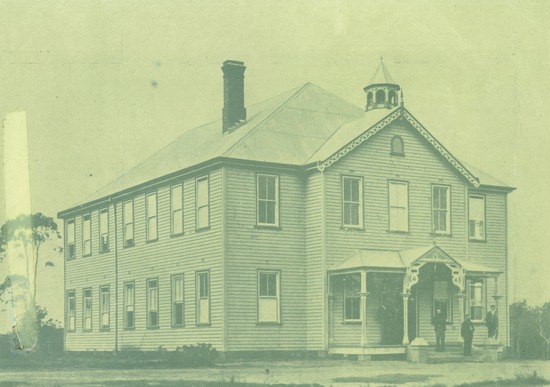
“Avondale Adventist School in Australia”
By the end of her time in Australia, Ellen White had made an incredible impact on the Australian Seventh-day Adventist Church. For starters, her presence helped increase church membership. When she first arrived in Australia, there were 445 members of the Adventist Church.27 By the time she left, there were over 2,086!28
But that was only a small part of her legacy. Here are some other ways she left her mark:
- She donated to help build the first Adventist church in continental Australia: During the economic depression, church leaders in Australia were struggling to come up with enough money to build the Parramatta Church. At the same time, Ellen White’s loved ones sent her $75 so she could buy a more comfortable chair to ease her pain when she was ill. But instead of using the money for herself, she donated it to the building funds for the Parramatta Church.29
- She helped locate the Avondale school: Ellen White was responsible for the final location of what is now known as Avondale University in Cooranbong, Australia. At first, many doubted whether it would be a suitable location because land inspectors reported the land to be unfruitful. But in a vision, Ellen White was assured that this was the land God had chosen.30
- She helped establish health institutions: This includes a sanitarium (health center) in Sydney and a hospital in Cooranbong.31
- She encouraged the founding of a health-food factory: This health-food factory, which she advised should be next to Avondale College, was created with the intention of providing healthy food alternatives like vegetarian meat substitutes.32
- She finished her book on the life of Jesus Christ while there: One of Ellen White’s primary concerns in going to Australia was that she wouldn’t have time to work on writing. Despite her concerns, she finished writing The Desire of Ages while she was there.33 This book is among her most popular works.
- She recommended a new organizational structure for the General Conference: Ellen White noticed that the General Conference back in the United States was struggling to handle the concerns of congregations around the world. Australian leadership often had to wait months for a reply from the General Conference (as mail didn’t travel very quickly). She was among one of several who recommended an intermediate conference, which became known as the Australasian Union Conference. Soon, every division of the Seventh-day Adventist World Church adopted this system and structure.34
- She ministered to Australians on a personal level: Despite facing her own financial struggles during Australia’s economic crisis, she provided new clothes and food for those in need.35
Ellen White’s contributions and Christian influence are still affecting Australian communities today.
Take Avondale University for instance. It has continued to expand and now features two campuses—one in its original location in Cooranbong and the other in the Lake Macquarie area. And the Sydney Adventist Hospital has become the largest private hospital in its state!
Ellen White’s time in Australia shows her heart for spreading the gospel of Jesus Christ and making a difference in the lives of individuals, even when it meant taking long journeys and living in a different country for years.
What commitment!
Related Pages
- White, L., Arthur, Ellen G. White: The Australian Years: 1891-1900 (vol. 4), pp. 13–18 [↵]
- Bradley, P. W., “When God Overrules,” Adventist Review, April 1, 1962, p. 8,https://documents.adventistarchives.org/Periodicals/RH/RH19820401-V159-13.pdf. [↵]
- Ibid, p. 12 [↵]
- Ibid. [↵]
- Ibid, pp. 19–21 [↵]
- Douglass, Herbert, Messenger of the Lord, p. 82 [↵]
- Ibid. [↵]
- Ibid. [↵]
- https://lineagejourney.com/read/ellen-white-called-to-australia [↵]
- White, Arthur, p. 18 [↵]
- Ibid., p. 188 [↵]
- Ibid., p. 8 [↵]
- Ibid., p. 22 [↵]
- Ibid., pp. 22-24 [↵]
- Ibid., p. 47[↵]
- Ibid., p. 124 [↵]
- Ibid. [↵]
- Ibid., pp. 138–139 [↵]
- Ibid., p. 148 [↵]
- Ibid., p. 151 [↵]
- Ibid., p. 188 [↵]
- Ibid. [↵]
- Ibid., p. 336 [↵]
- Ibid., p. 371 [↵]
- Ibid., pp. 366–367 [↵]
- Ibid., p. 78 [↵]
- “Report of Seventh-day Adventist Foreign Conference and Mission,” Seventh-day Adventist Yearbook, p. 86 [↵]
- “Summary of the Statistics of Conferences and Missions Year Ending December 31, 1900,” General Conference Bulletin 1901, pp. 162, 164 [↵]
- Douglass, p. 82 [↵]
- Ibid., p. 190 [↵]
- White, Arthur, pp. 430, 437, 452 [↵]
- Ibid., p. 433 [↵]
- Ibid., p. 375 [↵]
- Ibid., pp. 120–121 [↵]
- Douglass, p. 82 [↵]
More Answers
Understanding Luke: The Beloved Physician, Historian, and Evangelist
Who was Luke in the Bible? What was he known for and what contributions did he make for the early church? Find out here.
Exploring the Life of the Apostle Paul
The apostle Paul went from Pharisee to Christian after a miraculous encounter with Jesus. He spent the rest of his life spreading the Gospel and writing words we still read today.
All About the Disciple, Simon the Zealot
“Simon the Zealot” was one of the 12 disciples chosen by Jesus Christ. But despite this important role, the New Testament doesn’t provide specific details about his life, family, job, etc.
Judas Iscariot, the Most Infamous Disciple of Jesus
Judas Iscariot is best known for betraying Jesus with 30 pieces of silver. This page looks more closely at who he was and what led him to do so.
Who Is Thaddeus, the Disciple?
Thaddeus (or Thaddaeus) is one of the more unique and obscure figures among Jesus Christ’s disciples in the New Testament. Though we know little about him from the Bible or tradition, we do know that he went by a few names, specifically Thaddeus, Lebbaeus, and Judas of James.
Matthew—From Tax Collector to Jesus’ Disciple
In the first book of the New Testament, we find the Gospel story from the perspective of Matthew. He was a Jewish tax collector from Capernaum in the first century AD, and he was likely despised by fellow Jews for choosing that profession.
Who Was Jesus’ Disciple Named James, Son of Alphaeus?
Two of Jesus’ 12 disciples were named James. While more is known about James the son of Zebedee and brother of John, let’s see what there is to know about the other James, known as James the son of Alphaeus—also sometimes referred to as “James the Lesser.”
What the Bible Tells Us About Thomas the Apostle of Jesus
You might know him as “Doubting Thomas” because he refused to believe in Jesus Christ’s resurrection without first seeing Jesus.
All About the Disciple James, Son of Zebedee
James the son of Zebedee was a fisherman who became Jesus’ disciple. Discover how his decision to follow Jesus shaped his life and the beginnings of the early Church.
Who was the Apostle John?
What does the Bible say about the apostle John? What is he known for today? Learn more about John’s life, ministry, and legacy here.
All About Bartholomew, a Disciple of Jesus
Bartholomew is a lesser-known character in the New Testament who is mentioned in each of the lists of the twelve disciples of Jesus Christ (Matthew 10:2-4; Mark 3:14-19; Luke 6:13-16). He is most likely the same individual as Nathanael (see John 1), someone who was sincerely studying the Scriptures and waiting for the Messiah to come.
What Do We Know About Andrew the Disciple?
Andrew was Jesus Christ’s first disciple (John 1:37-40) and the first to recognize Him as the Messiah.
Simon Peter: Fisherman to Disciple to Apostle
Simon Peter was a simple fisherman who became one of the most well-known disciples of Jesus Christ. He is perhaps best known for being part of Jesus’ inner circle of three disciples, walking on water, and proclaiming Jesus as the Son of God.
Who Was Philip the Disciple In the Bible?
Philip was one of the 12 disciples called by Jesus Christ during His earthly ministry. He was originally from the city of Bethsaida and to this day is often known as the “practical disciple.”
How Are Seventh-day Adventists Different from Other Protestants?
As a Protestant Christian denomination, the Seventh-day Adventist Church regards the Bible as the ultimate guide and looks to Jesus Christ as the only way to salvation. We do have some differences of belief or interpretation when it comes to topics like Bible prophecy, end-time events, the Sabbath, and a person’s state after death.
What Do Adventists Believe About the Atonement?
If you’ve spent much time in the Bible books of Leviticus or Numbers, you might’ve noticed the word atonement.
Who Changed the Sabbath to Sunday?
If the Bible never mentions the change of the Sabbath, why do so many today attend church on Sunday?
How Adventists Handle Death and Funerals
Most Seventh-day Adventist funeral services are similar to those of other Protestant denominations, such as Methodists, Baptists, or Presbyterians, but you might find a few differences or unique nuances.
Adventist Culture
Many Seventh-day Adventists adhere to specific lifestyle principles that can make them stand out from those in other Christian denominations. Whether it’s going to church services on Saturday or eating the popular Adventist entrée of “haystacks.”
Do Seventh-day Adventists Believe Only They Will Go to Heaven?
No, Adventists definitely don’t believe they’re the only ones that will go to heaven. As a matter of fact, we don’t believe admittance into heaven is ever based on which church or denomination we belong to. People all over the world from different Christian denominations, religions, and walks of life will be welcomed by Jesus.
What Is Children’s Sabbath School in the Adventist Church?
Children’s Sabbath School is a Bible program offered every Sabbath at Adventist churches for children from birth to age 18. These classes give children the chance to learn Bible stories, make new friends, and participate in fun activities.
How Adventists Developed the Sanctuary Doctrine and What It Means
The sanctuary was a building at the center of ancient Israelite society that gives us a small picture of the original sanctuary, God’s throne room in heaven (Hebrews 8:1-2).
What Do Adventists Believe About Faith and Works?
Adventists believe we are saved by faith, which is the belief and trust we have in Jesus to save us from our sins. Jesus, then, enables us to live in harmony with God’s commandments and serve others with love—sometimes referred to as “works.”
Do Adventists Observe Easter-Related Holidays?
Jesus Christ’s resurrection, celebrated on many Easter-related holidays, is central to the beliefs of the Seventh-day Adventist Church. And that means we seek every opportunity to remember it.
An Overview of Seventh-day Adventist Higher Education
The Seventh-day Adventist Church has about 118 tertiary schools around the world. Though many of them are within North America, you’ll also find Adventist universities in countries across the world—places like Croatia, Austria, Brazil, Madagascar, and the Philippines.
The Ten Commandments from a Seventh-day Adventist Perspective
Ever eaten a salad and gotten a big piece of green stuck in your teeth? And you didn’t realize it was there until you looked in the mirror? (Because no one ever told you!)
Major Fulfilled Bible Prophecies You Should Know About
Prophets seem like something from novels or movies. The predictions they make couldn’t actually happen, could they? After all, nobody can tell the future!
What Day Is the Sabbath, and How Do We Know?
The Sabbath is a declaration of weekly rest by God which we find in the Bible (Genesis 2:2-3). But you may be wondering:
Why Do Some Bibles Have More Books Than Others?
Christians consider the Bible as their sacred writings. But within Christianity, different denominations use Bibles with different numbers of books.
Didn’t find your answer? Ask us!
We understand your concern of having questions but not knowing who to ask—we’ve felt it ourselves. When you’re ready to learn more about Adventists, send us a question! We know a thing or two about Adventists.

